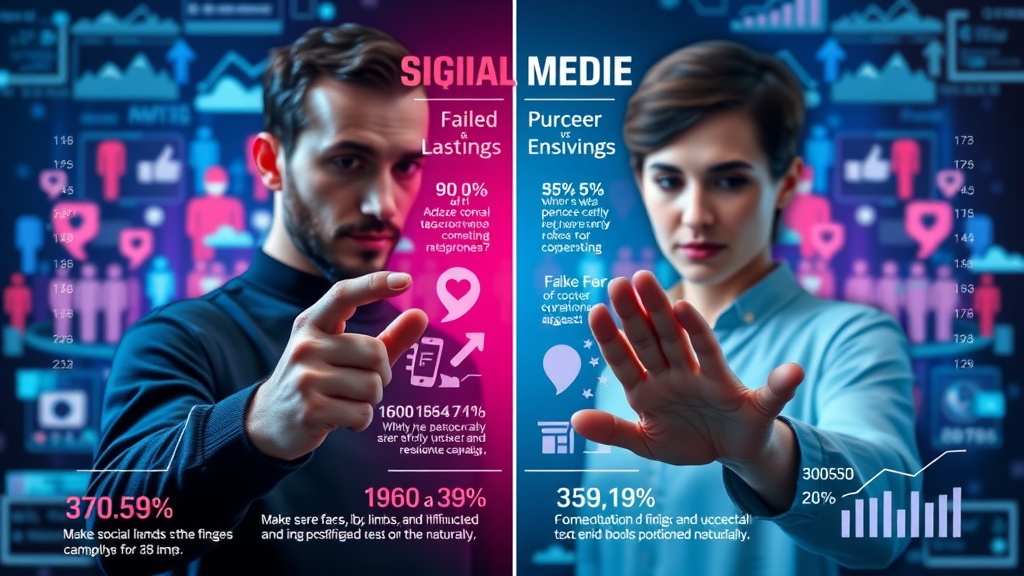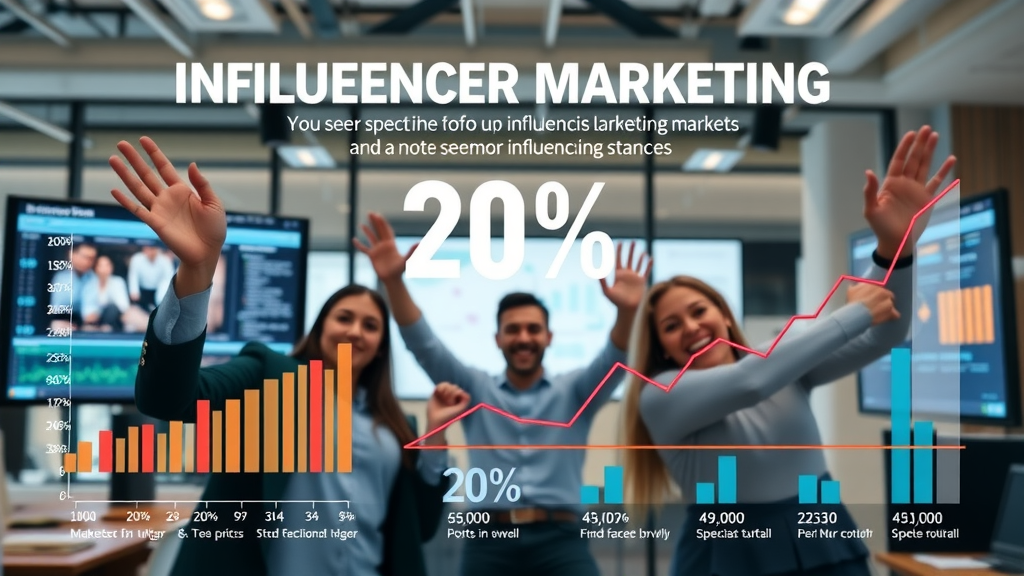Hook: Did you know that nearly 74% of brands experience disappointment with their social media campaigns? If your campaign ROI is stagnant or even declining, you’re far from alone. But, with the right fixes, your brand can turn missed opportunities into measurable success—fast.

Why Social Media Campaigns Often Miss the Mark: Startling Trends You Need to Know
Most social media campaigns don’t meet their intended goals, and for good reason. A growing number of brands are realizing that simply posting more often or increasing ad spend won’t fix underlying issues. According to industry analysis, many campaigns falter because of unclear objectives , poor audience targeting , or failing to differentiate content across each media platform .
Emerging data reveals that brands continue to waste valuable resources on ineffective media posts , chasing viral moments rather than sustained engagement. This misalignment between marketing effort and real business goal achievement results in missed ROI. The latest trends underline that savvy brands track not just likes and shares, but the channel-specific KPIs that drive their overall marketing strategy forward.
"Almost 74% of brands report underwhelming results from social media campaigns due to poor targeting and unclear objectives."
Transform Your Social Media Campaigns with Proven Fixes: What You’ll Learn
- Critical reasons behind failed social media campaigns and how to spot them
- Step-by-step solutions to revitalize your media campaign
- Best practices in social media marketing, including platform strategies
- Real-world media campaign examples with measurable impact
- Expert tips for creating successful social media
- How to leverage campaign data and analytics

The Top 10 Reasons Your Social Media Campaign Is Failing—and How to Fix Each
- Lack of Clear Objectives in Social Media Campaigns : Without specific outcomes, your marketing efforts lack direction. Fix this by establishing SMART goals —Specific, Measurable, Achievable, Relevant, and Timely. Tie every social media post or ad to a larger business goal for maximum impact.
- Misidentifying or Ignoring the Target Audience : If you’re not speaking directly to your ideal customer, even the best content ideas fall flat. Invest in research to create data-backed personas. Use analytics and feedback from previous campaigns to refine who you target on each media platform .
- Inconsistent Brand Voice Across Media Platforms : Mixed messaging confuses followers and weakens trust. Fix this by developing clear brand guidelines, ensuring every media post and social network presence reflects a unified tone.
- Poor Content Strategy and Social Media Marketing Execution : Posting low-quality or irrelevant content bores audiences. Implement a content calendar grounded in thorough research, and diversify your media content —from blogs and infographics to videos and livestreams.
- Neglecting Media Marketing Analytics and Data-Driven Decisions : Brands that don’t monitor performance often repeat mistakes. Use tools to track KPIs like engagement, reach, and conversions, adapting your approach based on real-time data.
- Overlooking Emerging Media Platforms and Channels : Platforms like TikTok and Threads reach new demographics every day. Regularly assess where your audience spends time and be willing to test new social media platforms.
- Ineffective Media Campaign Budget Allocation : Spending blindly can drain resources. Routinely compare spending against results on each channel and reallocate budget toward what's working best.
- Ignoring Engaging Visual and Video Content : Today’s audiences expect rich imagery and video. Invest in high-quality creative assets to help your posts stand out and boost brand awareness .
- Underutilizing Campaign Examples for Inspiration : Don’t reinvent the wheel; analyze successful social media campaign examples to discover proven tactics and content ideas that resonate.
- Failing to Adapt and Optimize Social Media Campaigns Over Time : What works now may underperform later. Regularly run A/B tests, gather feedback, and make iterative improvements to your social media marketing strategy.
| Reason | Solution | KPI to Track |
|---|---|---|
| Lack of Objectives | Set SMART goals | Campaign goal completion rate |
| Unclear Target Audience | Build data-backed personas | Engagement from priority demographics |
| Inconsistent Brand Voice | Create brand guidelines | Tone & messaging analysis |
| Poor Content Strategy | Develop content calendar | Post engagement metrics |
| Missing Analytics | Use robust analytics tools | Conversion, reach, CTR, cost per result |
| Ignoring Platforms | Research new platforms (TikTok, Threads) | Platform-specific growth |
| Poor Budget Allocation | Reassess spend vs. impact | ROI per channel |
| Bad Visuals & Video | Invest in professional assets | Video completion rates |
| Underusing Examples | Analyze top campaign examples | Benchmark performance |
| No Optimization | Run regular A/B tests | Improvement after tests |
How to Diagnose Your Social Media Campaign Problems: Practical Media Campaign Analysis

Identifying Common Social Media Campaign Pitfalls
- Low engagement rates on social media platforms
- Lack of website traffic from media campaigns
- Inconsistent messaging between social platforms
- Stalled follower growth on key media channels
- Minimal lead generation from digital campaigns
Every social media campaign runs the risk of underperforming for a host of reasons. It’s crucial to look beyond vanity metrics—like raw impression counts—to spot more meaningful problem areas, such as stagnant audience growth or low click-through rates. For instance, if your media content isn’t consistently generating leads or website visits, there’s likely an issue with either targeting, creative, or channel selection. Regular reviews help marketers pivot their marketing efforts from guesswork to data-backed strategies.
Unifying your brand awareness across platforms, while adapting your messaging for each, is essential for preventing confusion and keeping followers engaged. Disparities in tone, look, or timing between posts can erode trust and make audiences less likely to interact with future media posts. Finally, compare your campaigns with top campaign examples to benchmark your success against industry leaders.
Conducting a Social Media Marketing Audit
- Review historical performance data
- Assess content quality and diversity
- Examine targeting and segmentation accuracy
- Compare with successful social media campaign examples
Conducting a formal social media marketing audit can be transformative. Start by gathering all relevant data—from past posts and ad performance, to follower demographics and conversion rates. Look beyond the basics: Are your campaigns generating brand awareness ? Are they driving the specific business goal you set at the start?
Next, critique your content mix. Do you have the right balance between visuals, short-form video, and written material? Have you experimented with new media platforms or stuck with the same tried-and-true channels? Benchmark these findings against outstanding media campaign examples to pinpoint gaps and new opportunities.

7 Data-Driven Steps to Revive Your Social Media Campaigns for Success
- Set measurable objectives for each media campaign
- Research and define your target audience precisely
- Adapt your brand voice for each social media platform
- Plan compelling content grounded in data-driven insights
- Monitor campaign metrics with leading analytics tools
- Benchmark performance against top campaign examples
- Continuously optimize based on platform feedback
To revive your social media marketing campaign , start with crystal-clear objectives. For example, decide whether you’re aiming for increased brand awareness , lead generation, or direct sales. Use detailed persona research to align messaging, visuals, and platform selection with your exact target audience . Audit your brand voice for consistency while fine-tuning the tone for each social media platform .
Turn to content ideas driven by past performance. What post formats have the best engagement? Which platforms are delivering real results? Implement leading analytic tools like Google Analytics, Sprout Social, or Meta’s native dashboards, and compare your progress with leading campaign examples . Finally, treat every campaign as an experiment—test, adjust, and improve for the next round.

Case Study: From Failing to Successful Social Media—A Turnaround Story
"Our media campaign engagement jumped 220% once we narrowed our target audience and personalized content by platform."
A leading e-commerce retailer witnessed stagnant sales and weak engagement through generic, one-size-fits-all social posts. After a comprehensive audit, they identified their real target audience segments and customized creative assets for each media platform —from product comparison videos on YouTube to interactive polls on Instagram Stories. By implementing rigorous campaign tracking and leveraging learnings from top media campaign examples , their next campaign exceeded both conversion and engagement benchmarks. The takeaway? With clear audience focus and precise optimization, social media campaigns can drive remarkable growth.
Their journey proves that successful social media marketing isn’t just about producing more content—it’s about producing the right content for the right audience on the right channel at the right time .
Best Social Media Campaign Examples: What Sets the Leaders Apart
Award-Winning Social Media Campaign Examples
- Spotify Wrapped: How data visualization and personalization drove viral sharing
- Ice Bucket Challenge: Harnessing social media for charitable engagement
- Old Spice 'The Man Your Man Could Smell Like': Mastering humorous video content across platforms

Modern marketing campaigns like Spotify Wrapped have redefined what’s possible in user-generated content and viral engagement. By giving every user a personalized content experience and encouraging sharing, Spotify amplified organic reach and became a social media staple each December. The Ice Bucket Challenge proved the power of social for cause marketing, leveraging genuine participation and easy-to-copy content for exponential reach across every major platform.
Brand-driven hits like Old Spice’s campaign show that humor, strong visuals, and platform-specific execution extend the campaign’s impact far beyond its initial launch. Reviewing these social media campaign examples gives actionable insights into content ideas, creative tactics, and cross-channel adaptation that any brand—big or small—can use.
Lessons from Top Media Campaign Examples
- Personalization and authenticity amplify impact
- Multi-platform strategies outperform single-channel media campaigns
- Engagement often trumps sheer reach in successful social media efforts
The secret behind award-winning media campaign examples is their commitment to relevance and resonance. They prioritize real connection—delivering content that feels personal, authentic, and worthy of sharing. Brands that build integrated, multi-platform strategies are able to reinforce messaging and adapt to user preferences more rapidly than those stuck in a single-channel rut.
Finally, today’s leaders know to prioritize social media post engagement over raw follower count, because it’s frequent, meaningful interactions that create lasting loyalty and move the needle on core marketing campaign outcomes.
Choosing the Right Social Media Platform for Your Media Campaign
How to Select the Most Effective Social Media Channel
- Assess audience demographics and behaviors for each platform
- Align content strategy with platform strengths (visual vs. written vs. video)
- Evaluate competitor performance and campaign examples by platform

Selecting the right social media platform for your media campaign is paramount. While Facebook excels with broad reach, platforms like Instagram and TikTok shine among younger demographics seeking visual and short-form video content. LinkedIn thrives with B2B audiences, while Twitter offers immediacy and trending dialogue.
Before deciding where to deploy your next social media campaign , map your target audience demographics, content preferences, and usage patterns. Analyze how similar brands and competitors perform on each channel—but don’t be afraid to carve out a niche with differentiated creative. Always tailor your marketing strategy to each platform’s unique strengths rather than blanket-posting identical content.
Quick Wins: Social Media Marketing Tips You Can Use Today
- Implement the 50-30-20 rule for balanced social media campaigns
- Schedule posts at audience-peak hours
- Incorporate short-form video for higher engagement
- Collaborate with nano- and micro-influencers for authentic reach
- Use campaign tracking pixels and UTM parameters for analytics

Ready to see improvements in your next social media marketing campaign right away? Start by following the 50-30-20 rule : dedicate half of your posts to engaging, value-driven content; 30% to curated or shared posts; and 20% to direct promotion. Research best times to post using analytics from each media platform to boost visibility.
Short-form video (such as Instagram Reels or TikTok) consistently delivers higher engagement, especially among younger users. To increase authentic reach, partner with nano- or micro-influencers whose audiences trust their recommendations. Don’t forget to accurately track all efforts using UTM parameters and pixels—ensuring your analytics reflect what’s really working.
Watch this expert explainer to uncover the most common pitfalls brands make in social media marketing campaigns—and see side-by-side solutions you can implement today.
This step-by-step guide shows you how to go from concept to campaign launch, with visual frameworks and tactical checklists for every milestone.
People Also Ask: Answers to Top Questions About Social Media Campaigns
What is an example of a social media campaign?

A well-known social media campaign is the ALS Ice Bucket Challenge. By encouraging participants to pour ice water over their heads and nominate friends to share the experience on social platforms, the campaign not only raised awareness but also millions for ALS research. The wide participation and viral nature of the challenge make it a textbook campaign example .
What is a social media campaign?
A social media campaign is a coordinated marketing effort to reinforce or assist with a business goal using one or more social media platforms. Campaigns are tailored for a targeted audience with specific messaging, creative assets, and clear timelines. They may aim to increase brand awareness , drive traffic, generate leads, or spark user engagement through shares, likes, and comments.
What is the 5 5 5 rule on social media?
The 5-5-5 rule suggests interacting with at least 5 new people, sharing 5 posts from others, and engaging with 5 comments per day as a way to build social network connections, diversify social media posts , and boost engagement. It helps brands maintain balance between pushing their content and nurturing relationships on each media platform .
What is the 50 30 20 rule for social media?
The 50-30-20 rule is a content distribution guideline: 50% of posts should be value-focused and useful for your audience, 30% should be shared or curated content (from partners or thought leaders), and 20% can be promotional—highlighting your product or services. This ratio keeps your media posts fresh, audience-centric, and non-intrusive.
Expert Answers to Common Social Media Campaign FAQs
-
How can I evaluate if my media campaign is truly successful?
Measure your results against campaign-specific KPIs, such as engagement, reach, conversions, and achievement of SMART goals. Compare with benchmark campaign examples and analyze qualitative feedback from your target audience . -
What KPIs matter in social media marketing?
Key indicators include engagement rate, click-through rate, conversion rate, cost per result, follower growth, and share of voice. Align the KPIs with your core business goal and marketing strategy . -
How often should I post on each social media platform?
Posting frequency varies by platform and audience, but most experts recommend daily or several times a week. Always prioritize quality over quantity and leverage analytics to determine optimal timing for each channel. -
What tools can help improve media campaign tracking?
Consider Sprout Social, Hootsuite, Buffer, Google Analytics, and native analytics from Meta, TikTok, or LinkedIn. These tools track post performance, audience demographics, and campaign ROI to inform media marketing decisions. -
Can small businesses run successful social media campaigns?
Absolutely! With targeted content, strategic platform choice, and data-driven optimization, even small teams can achieve outstanding social media marketing campaign results—with agility often proving an advantage over bigger organizations.

Key Reminders for Building Effective Social Media Campaigns
- Always align objectives with data from previous campaigns.
- Audience targeting is vital for every media campaign.
- Invest in creative assets for visual storytelling on media platforms.
- Learn from both successful and failed media campaign examples.
- Continuously monitor and pivot strategies in response to analytics.
Ready to Fix Your Social Media Campaigns? Get Personalized Support Today
Don’t let another campaign underperform. Call us at (385) 469-1869 or email at info@solu4u.com today! Get personalized support, actionable insights, and measurable improvement for your next social media campaign .
Act now to transform your social media campaigns into measurable wins—define objectives, analyze data, and iterate for consistent growth. Your next campaign’s success starts today.
Sources
- https://sproutsocial.com/insights/social-media-campaigns/
- https://blog.hootsuite.com/social-media-campaigns/
- https://buffer.com/library/social-media-campaigns/
- https://www.socialmediatoday.com/news/social-media-marketing-trends-2023/642202/
- https://www.wordstream.com/social-media-campaign
To enhance your understanding of successful social media campaigns, consider exploring the following resources:
-
“11 Successful Social Media Campaigns to Learn From in 2025” : This article provides detailed analyses of standout campaigns, including CeraVe’s innovative “Michael Cera Conspiracy” and Dove’s impactful “#TheFaceOf10” initiative. It offers insights into strategies that have effectively engaged audiences and driven brand success. ( talkwalker.com )
-
“What the Best Social Media Campaigns Teach Us” : This piece examines Procter & Gamble’s #DistanceDance campaign, highlighting how collaboration with influencers and user-generated content can lead to widespread engagement and positive brand perception. ( searchenginejournal.com )
By studying these examples, you can gain valuable insights into crafting compelling and effective social media campaigns that resonate with your target audience.
 Add Row
Add Row  Add
Add 




Write A Comment